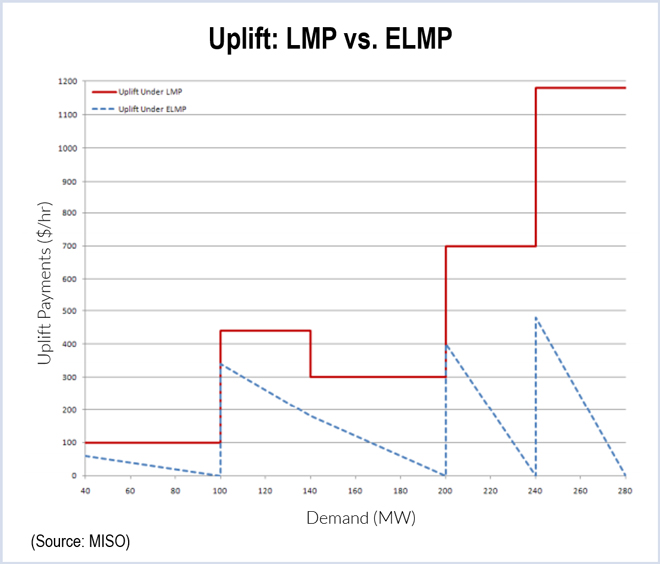NEW ORLEANS — Independent Market Monitor David Patton told the MISO Board of Directors on Wednesday that MISO members are paying outsized premiums as a result of transmission loading relief actions (TLRs) called by neighboring SPP, PJM and the Tennessee Valley Authority.
Patton said day-ahead binding on a TVA flowgate caused more than half of the price divergence at the Michigan Hub and much of the premiums in Arkansas in January.
Binding constraints that result in TLRs “tend to be very costly to MISO,” Patton said, blaming SPP TLRs for 20% of the congestion pricing at generator locations in January. Much of that was due to a single constraint that priced 10 times higher in MISO than in SPP, he said.
Patton said the problem should decline with the beginning of market-to-market coordination with SPP on Sunday and the introduction of Coordinated Transaction Scheduling with PJM. (See related story, PJM MRC/MC Briefs.) A joint operating agreement with TVA also would help, he said.
Patton said he will “investigate whether the TLRs are in all cases justified” and what else can be done to moderate price volatility.
Winter Forced Outage Rates Return to Normal
Forced outage rates have returned to typical levels during cold days this winter, with 15,000 to 18,000 MW out or derated, compared with more than 40,000 MW at the peak in January 2014, said Todd Ramey, vice president of system operations and market services.
Director Baljit “Bal” Dail asked whether there was any evidence of generators improperly claiming outages to withhold supply.
“That is something that we are investigating,” responded Patton, who said he would provide a report in March. “We are looking at some of those outages.”
Board Considering Fewer Markets Committee Meetings
The Board of Directors is considering reducing its Markets Committee meetings from monthly to the seven times a year that the full board meets. MISO staff created a proposed schedule at Director Michael Curran’s request.
“There is an opportunity to tighten up the agenda,” Curran said.
“We tried to do it before, but the members said they like it every month,” cautioned Director Paul Feldman.
The board will discuss the matter this month after getting stakeholder feedback.
Extended LMP Starts

MISO launched extended locational marginal pricing (ELMP) Sunday, a new calculation method that the RTO says will allow it to better capture fast-start gas turbines and emergency demand response in clearing prices.
It will allow fast-start resources that are either offline or scheduled at limits to set prices, which was previously impossible because of limitations in the RTO’s algorithm.
Emergency DR will also be able to set prices in the real-time energy and operating reserve markets.
MISO says the changes should minimize price spikes during shortages, provide more accurate price signals and reduce uplift charges.
Patton called it a “very important” initiative that should also allow price-responsive demand.
ELMP was one of four market changes introduced Sunday:
- Market-to-market coordination with SPP, which allows the two RTOs to use economic dispatch to improve the cost effectiveness of their congestion management along the seam. The Federal Energy Regulatory Commission approved the initiative in January (ER13-1864). (See SPP, MISO Move Ahead on Flowgate Rules.)
- DR will be allowed to provide multi-part offer curves and maximum regulating reserve and contingency reserve limits daily. It removes the host load zone association for some resources.
- External asynchronous resource (EAR) market participation: Market resources connected to the main MISO market by a direct-current tie, such as Manitoba Hydro, were previously able to offer only generation into the market. Now, a bidirectional EAR will allow participants to submit price sensitive bids and offers. It also will allow dispatch of flexible hydro facilities in response to changes in supply and demand.
— Rich Heidorn Jr.


